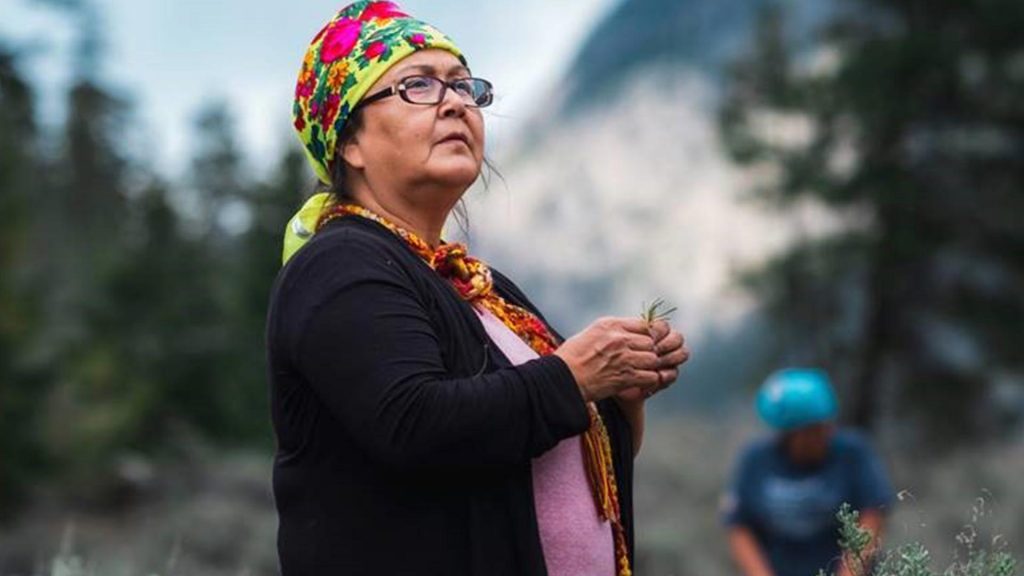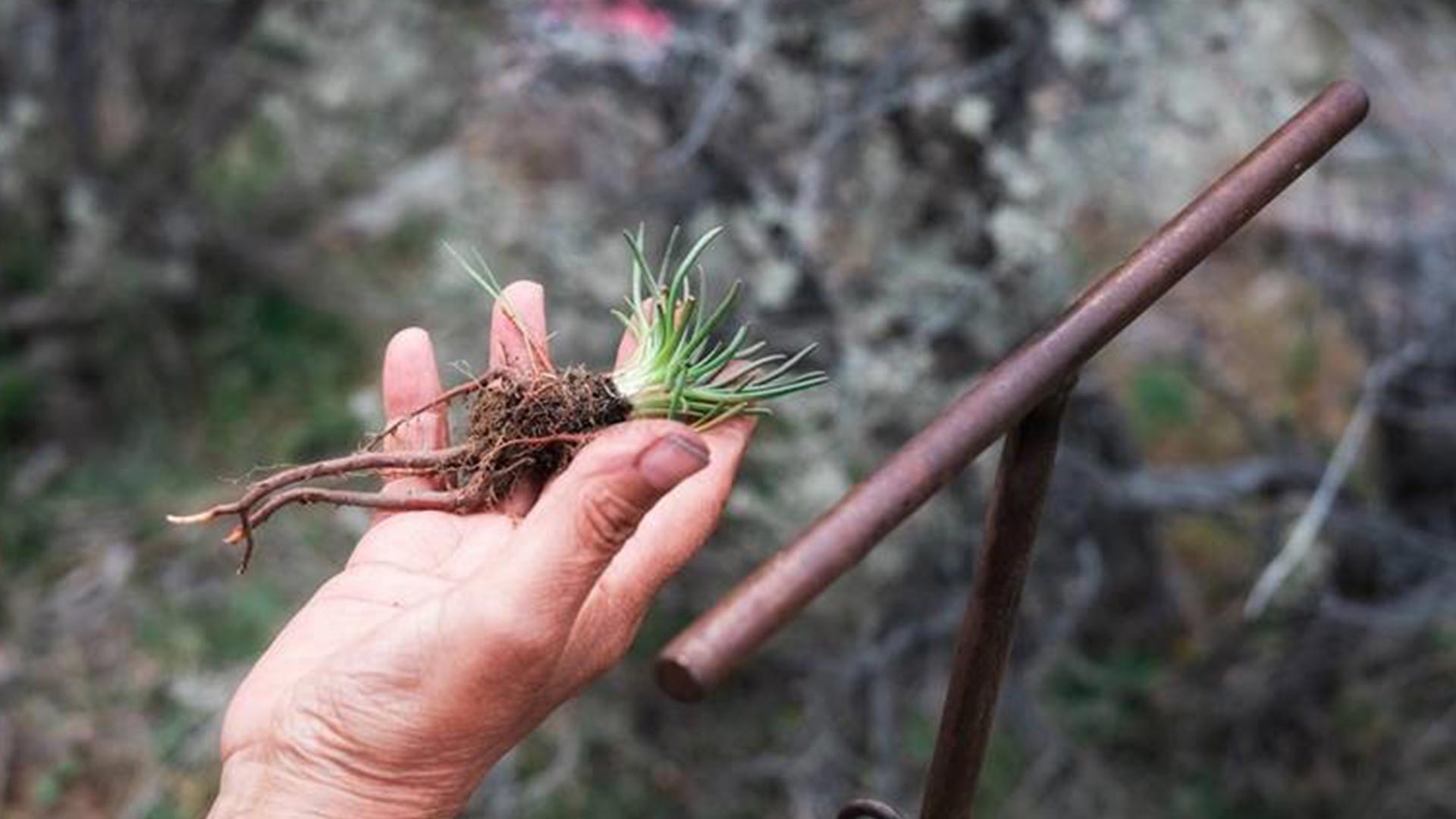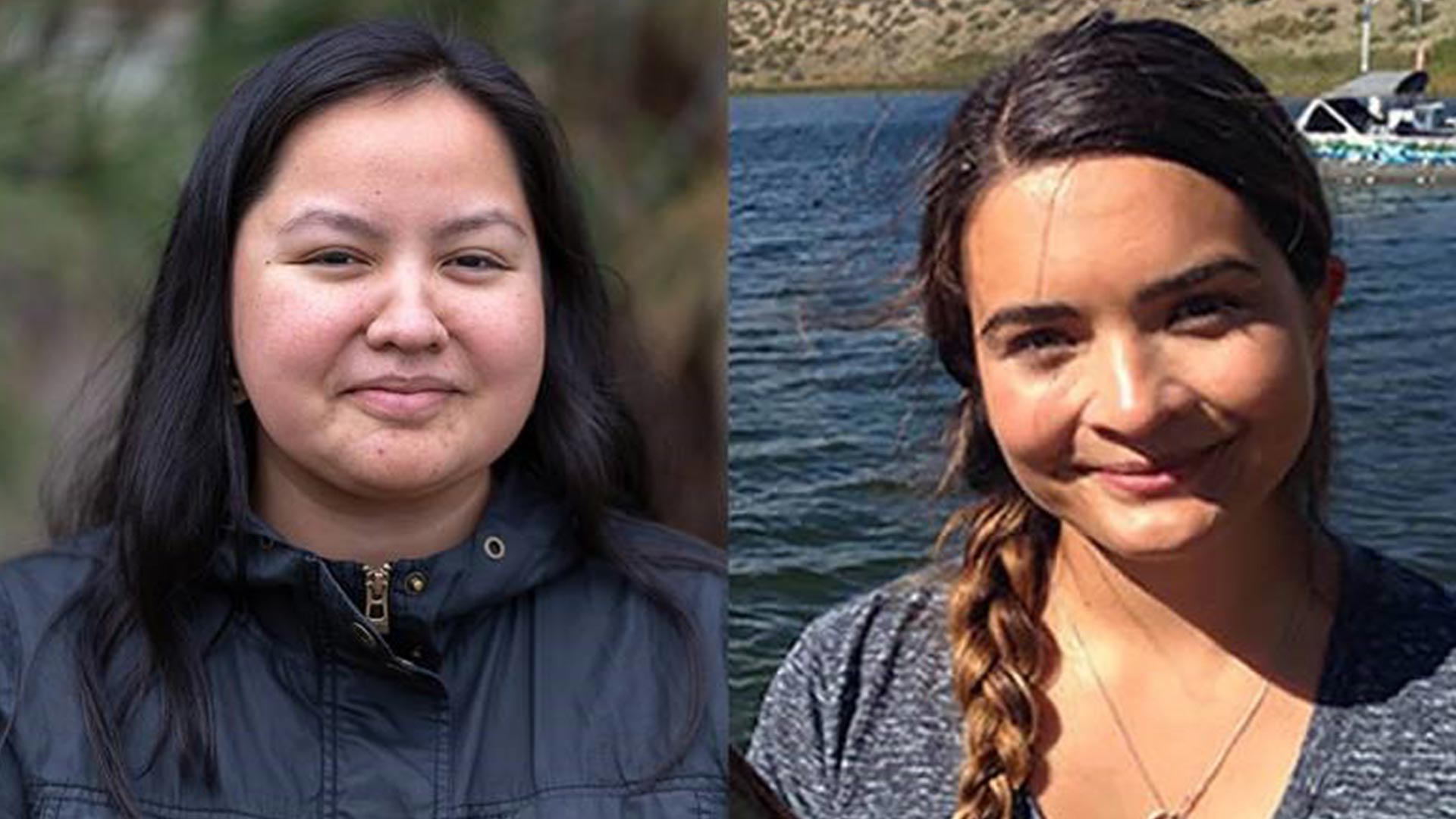
On a Saturday morning, Ryan Oliverius packs up his camera gear and prepares to head out with his mother Susan to pick sp̓iƛ̓m (pronounced speetlum), also known as bitterroot.
“Being out on the land is like meditation,” Ryan explains, adding that COVID-19 hasn’t really impacted his connection to the land. “If anything I appreciate it more.
“I have a huge appreciation for land and water because it is life bearing, it can both give and it can also take life.”
Ryan Oliverius, both a member and councillor for the Okanagan Indian Band (OKIB), graduated from Thompson Rivers University in 2017 with a degree in Business Administration.
In 2019, he was voted in as a councillor for OKIB, and is also working in communications for the Okanagan Nation Alliance (ONA).
His social media accounts are full of cinematography and images of the land.
With 10,000 followers on his Instagram and more than over 29,000 on TikTok, Oliverius has been successful intertwining his passion, and his humor throughout these platforms.
He also helped facilitate the Okanagan Nation Alliance (ONA) #sqilxcawt challenge.

In December, the ONA put out a call on social media. They told people to document their time out on the land, calling it the #sqilxcawt challenge.
When COVID-19 struck, they updated the challenge, asking people to wash their hands and respect social distancing.
Documenting these ancestral ways of connecting with the land was all about keeping people connected.
Being out on the land is home.
As Sofia Terbasket-Funmaker, who identifies as having mixed Syilx, Ho-chunk, Anishinaabe and European ancestry, sits at a secluded beach just outside of Cawston, B.C., with her younger brother, she points out a blue bird that passes by.
Terbasket-Funmaker moved home recently after finishing her Bachelor of Arts degree in Indigenous Studies at the University of Victoria.
“For my community, because it’s so small, we can go outside,” she says. “But when I was in Victoria, I was in a one bedroom apartment and it didn’t even really feel safe to leave the apartment.
“So it’s a lot less claustrophobic here.”
The contrast of living in an urban environment to being closer to the land is palpable.
While people are being encouraged to stay home, for most Indigenous communities around the world, being out on the land is home.
In Syilx/Okanagan Tterritory where Terbasket-Funmaker lives, people are not only going out on the land, they’re being encouraged to bring their phones and cameras with them.
When Terbasket-Funmaker first found out about the challenge, she knew she had to participate.
“I think it’s important, as Syilx people to be outside because it’s remembering what it is to be Syilx,” she says.
“The land is our original teacher, it’s how we came to be Syilx people.”
Terbasket-Funmaker, who submitted several photos when the challenge first started, has since created an Instagram page called, TMIXW TIMES.
The account is a “Syilx perspective on plant identification and land restoration in Syilx territory.
“With this challenge and the page I am making, there is a lot of potential for it. Also, a lot of challenges, because with social media there is a matter of what do you share culturally, knowledge wise, and what is knowledge that is not meant to be public,” she says.
Ryan Oliverius agrees, “Certain things are not shared online. There is a lot you have to be very cautious about.”
They both agree that there still is a place for social media.
“I feel social media does have a really good platform as a starting base for getting people outside,” says Terbasket-Funmaker.
How did this come to be?
Sarah Alexis, a Syilx woman and member of the Okanagan Indian Band, and Tessa Terbasket a Syilx woman from the Lower Similkameen Indian Band are the masterminds behind the #sqilxcawt challenge.
Both women work for the ONA which was formed in 1981 to represent eight member communities.
“During the spring months, many of the nation members are beginning to move towards being more outside,” Alexis and Terbasket write via Facebook Messenger. “Especially with the pandemic there seems to be more people who are shut indoors, for very good reason.
“The intent of the challenge was to get people outdoors away from other people in a safe manner and connect with being on the land.”
And while they recognize that COVID-19 is impacting spring movement, they also emphasize that, “protecting Indigenous rights to harvest and gather in these times is extremely important.”

With over 70 submissions, the online challenge deadline was April 17. The first place winner, Amber Kruger Càrdenas, won a $100 gas card, canned salmon, a hat and a wellness book.
Meanwhile, the Lower Similkameen Indian Band (LSIB) is currently doing a mind, body and soul challenge foverto encourage self-care.
Many other communities and individuals are encouraging people to engage culturally on social media through language challenges, virtual powwows, TikTok challenges and free online courses or concerts.
Not alone
People in Syilx/Okanagan territory are not alone in looking for land-based connections right now.
On March 30th the Government of the Northwest Territories (GNWT) and Indigenous Services Canada (ISC) announced federal funding of $2.6 million dollars to go towards the At Home on the Land initiative, which according to a joint statement, is “to help Indigenous families who are choosing to be on the land as part of the territory’s response to COVID-19.”
Following recommendations by Dr. Kami Kandola, chief public health officer in the N.W.T., the “initiative is aligned with broader public health recommendations for increased physical distancing during the Coronavirus pandemic,” said the joint statement.
The release explains that many families in the N.W.T. have moved onto the land to places where they can maintain safe physical distances.
“Conventional physical distancing measures, like staying at home, that are recommended by Canada’s public health officials can have detrimental health effects in some Indigenous communities where housing can be overcrowded,” the release explains.
While there has not yet been similar funding announced in southern communities, the sentiment expressed by Dene National Chief Norman Yakeleya at the time the funding was announced resonates.
“Elders and knowledge keepers have always told us ‘a day will come, when we will need to go to the land’ and now is that time. Our people are remarkably strong and powerful, and we will do what is required to keep each other safe. Being on the land is our way of life.” says Yakeleya.
One thing remains clear and that is, like Oliverius’ family, Indigenous peoples around the world when possible have always been connected to the land. The land is part of how people survived previous pandemics, genocide, assimilation and the ongoing threat of colonization.
“My family has always done this,” Oliverius explains. “Even before the pandemic, it was passed on from my grandmother to my mother.”
Chehala Leonard is reporting from the Okanagan for The Discourse as part of the government of Canada’s Local Journalism Initiative. Her work is featured on IndigiNews.com, a new platform created by The Discourse and APTN. Read more about the partnership here.











